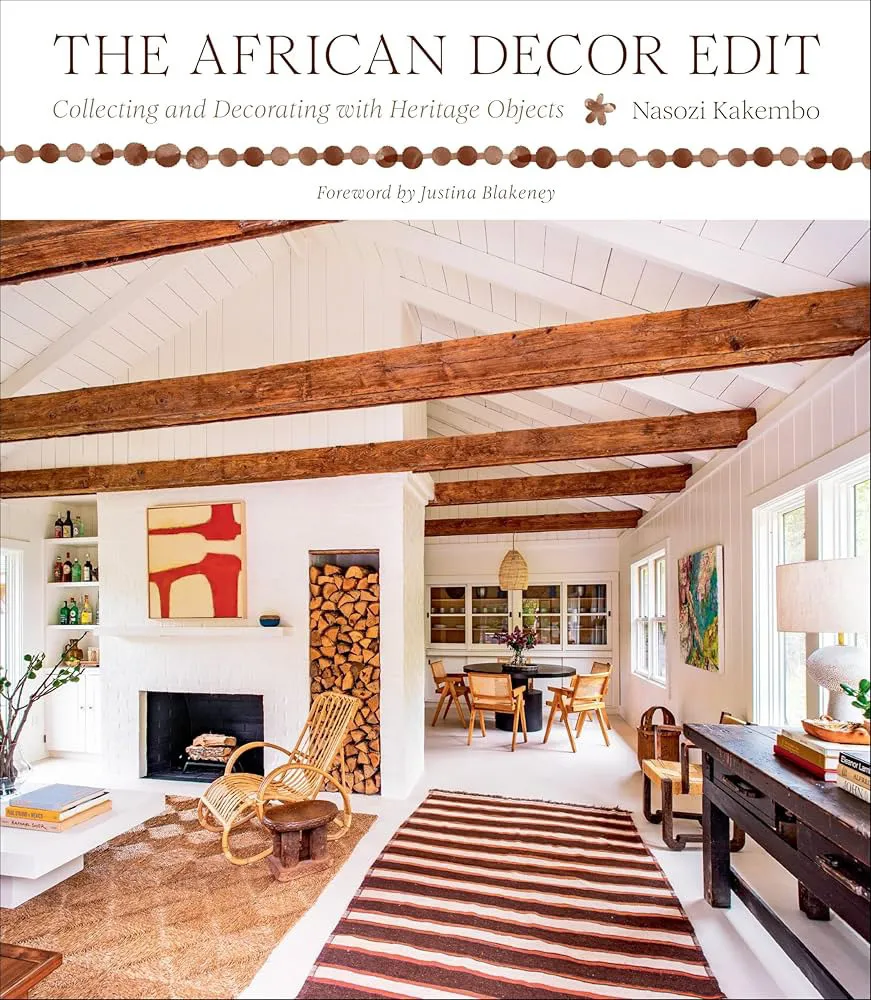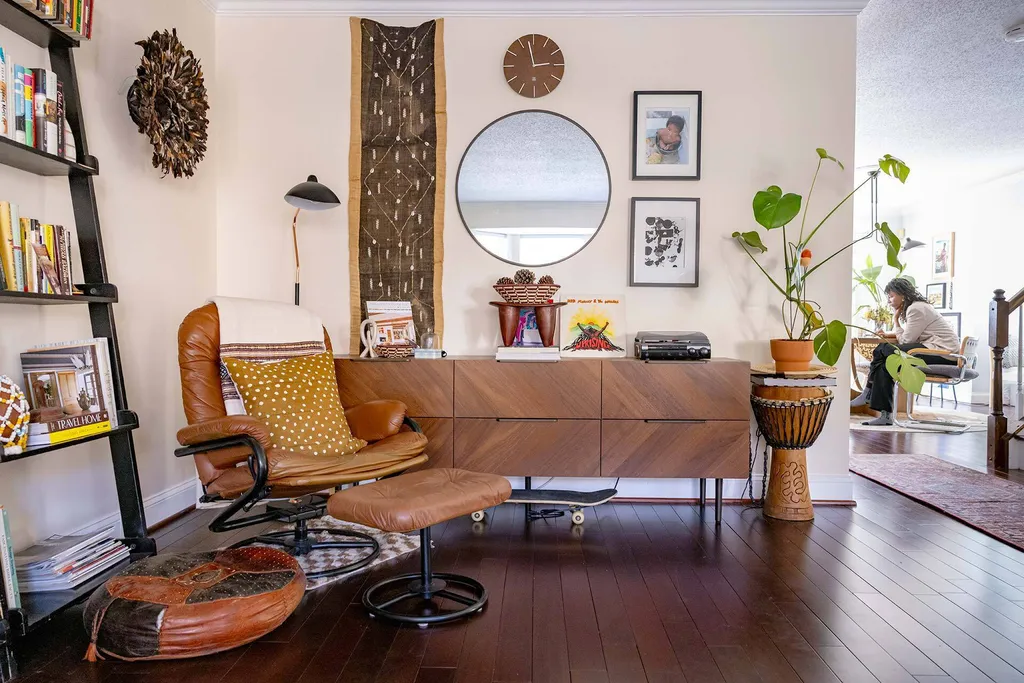- October 28, 2024
- By Sala Levin ’10
The multicultural aesthetic of Nasozi Kakembo’s ‘05 home when she was growing up felt as natural as the groundnut stew her mother would cook for dinner. Impala hides that decorated the walls were important symbols of her Ugandan-born father’s Baganda tribe, the Senufo statues were mementos from her mother’s travels in West Africa, and the minimalism that governed it all was a holdover from her parents’ time in Germany, where her father attended medical school and her mother was a fashion model and nurse.
But as Kakembo got older, she realized that the tastes of most of her American friends and neighbors in Silver Spring, Md. ran more to the pastel pink sofa set her parents eventually bought from BJ’s Wholesale Club. As an art history student at the University of Maryland, she became interested in understanding more about how the baskets, textiles, furniture and art from her parents’ African heritage could be incorporated into homes around the world.

Kakembo’s new book, “The African Decor Edit: Collecting and Decorating with Heritage Objects,” released this month by Abrams Books, highlights artisans from across the continent, as well as homes around the world that have successfully blended modern tastes with traditional styles.
“I hope readers take away a sense of empowerment to feel more comfortable decorating with African objects,” said Kakembo. “As lovers and consumers of African and African-inspired design, the demand is clear. It’s here to stay.”
Kakembo’s artistic streak became clear early on. When her cousin gave her a hand-me-down Barbie Dreamhouse as a young girl, Kakembo immediately began remodeling the pink plastic mansion. “I started taking shoeboxes and adding additions and stairs so that it would meet my standards,” she said.
At the same time, Kakembo was immersed in various African cultures. Her father had emigrated from Uganda to the UK in the 1970s during a period of political upheaval, but his family still lived in the East African country. (Leery of political instability, he didn’t take his daughter to meet her grandmother until she was in college.) Her mother, born in Texas and raised mostly in Boston, worked at an African art gallery in Washington, D.C., and traveled extensively throughout the continent.
At the University of Maryland, Kakembo studied art history with a focus on architectural history and African art, and traveled to Morocco and Uganda, the latter of which “felt like home.” After college, Kakembo moved to New York City, where she earned a graduate degree in urban planning at Columbia University and worked for a human rights foundation giving grants to international groups and individuals advocating for a range of issues. On a trip to Senegal, however, a visit to a fabric market in the West African country altered her professional trajectory.

“I just was blown away by the sheer volume” of fabrics, Kakembo said. She bought some pieces to take home, and “had this whole creative explosion on the plane ride back,” where she came up with designs for pillows. (“I did need pillows at the time,” she said.) She taught herself to sew, and soon was selling her pillows at festivals and markets in Brooklyn and on the Lower East Side.
Eventually, Kakembo’s pillow business blossomed into XN Studio, a design business that incorporated her work as well as items she’d bring back from her trips to Africa.
For “The African Decor Edit,” Kakembo spent several years making trips to the continent, visiting artisans she already knew, and through her network, discovering new creators in countries she hadn’t been to before. That’s how she met the artists behind the hand-carved stools, Juju feather hats and wood Bamun shields from Cameroon. “Those were three items I desperately wanted to feature” in the book, Kakembo said.
Other traditional objects highlighted in the book include cotton weavings from the Dorze people of Ethiopia, Tonga baskets from Zambia and batik textiles from Ghana. The book also showcases the homes of Kakembo’s friends and acquaintances in Berlin, Los Angeles, London, and even her own home in Maryland.
“The book breaks down a lot of backstory behind some of the objects that have often been really disconnected from their origin stories,” said Amanda McClements, owner of Washington, D.C., home decor store Salt and Sundry, which carries some of Kakembo’s products. “For people who care about design, who care about the provenance of items and are curious and want to better understand, she’s contributing a really important voice to that conversation.”
Kakembo hopes that the book will encourage readers to take respectful risks in their home design choices, and to support small businesses that work directly with African artisans. “So much has been taken out of Africa without any Africans benefiting from that extraction of their cultural heritage,” she said. “This is a piece of the puzzle to right the course of what continues to be a really imbalanced economic picture.”
